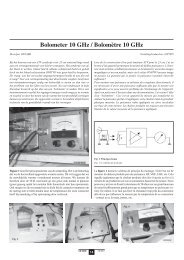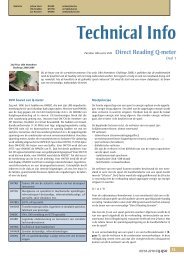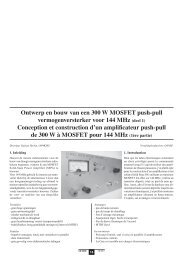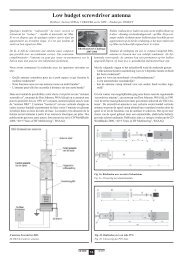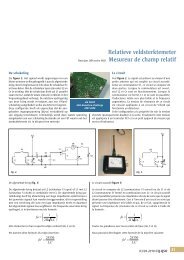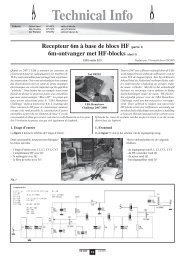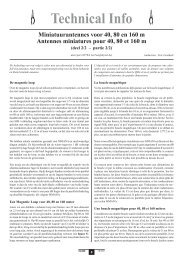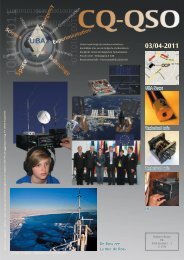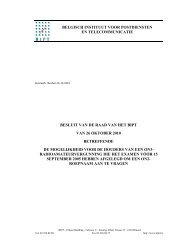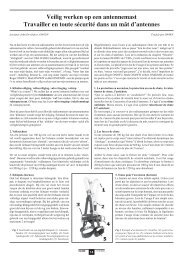IARU Region 1 VHF Managers Handbook - UBA
IARU Region 1 VHF Managers Handbook - UBA
IARU Region 1 VHF Managers Handbook - UBA
Create successful ePaper yourself
Turn your PDF publications into a flip-book with our unique Google optimized e-Paper software.
periods, on this frequency. It may be that the station calling CQ will not hear your first reply, but may do so<br />
during one or more subsequent periods. Hence there is no need to return to the calling frequency.<br />
5<br />
The QSY frequencies should take place in the segment according to the <strong>IARU</strong> <strong>Region</strong> 1 bandplans.<br />
a. MGM, kHz-frequency<br />
Users of MGM indicate the frequency they intend to carry out the QSO by adding the three digits of the<br />
absolute frequency, i.e. the kHz-frequency. For example CQ383 indicates that the station will listen on<br />
144,383 MHz for a subsequent contact.<br />
Example: G4ASR wishes to try a random MS experiment on MGM and wants to start with calling CQ. He<br />
first checks his receiver in the MGM range of 144,360 MHz to 144,397 MHz and finds a clear frequency on<br />
144,394 MHz. He calls CQ on 144,370 MHz, and he must now add the kHz- frequency to his CQ call to<br />
indicate on which frequency he intends to listen. In this example he will therefore call "CQ394" in his CQ<br />
call.<br />
Example: Your receive PA2DW who is calling "CQ274" on the 50 MHz random frequency. This tells you<br />
that PA2DW will listen on exactly 50,274 MHz.<br />
b. CW/SSB<br />
This proposal does not describe any procedures for QSY operation on CW/SSB anymore.<br />
7.4.8 QSO PROCEDURE<br />
All modes use the same MS-QSO procedure.<br />
When attempting random SSB contacts, speak the letters clearly, using phonetics where appropriate.<br />
a. Calling<br />
The contact starts with one station calling the other by sending both call signs.<br />
b. Reporting system<br />
The report consists of two numbers:<br />
First number Second number (signal strength)<br />
(burst duration) S-units S/N<br />
2 : up to 0,5 s 6 : below S2 or below 5 dB<br />
3 : 0,5 - 1 s 7 : from S2 to S3 or from 5 dB to 10 dB<br />
4 : 1 - 5 s 8 : from S4 to S5 or from 10 dB to 15 dB<br />
5 : longer than 5 s 9 : above S5 or above 15 dB<br />
Note that the number "1" is not used as the first number/burst duration.<br />
Maximum duration of a ping (Underdense Reflection):<br />
Band Duration<br />
50 MHz 1000 ms<br />
70 MHz 500 ms<br />
144 MHz 100 ms<br />
432 MHz 13 ms<br />
This means that the duration of bursts (Overdense Reflections) are longer than the above ping<br />
durations.<br />
c. Reporting procedure<br />
A report is sent when the operator has positive evidence of having received the correspondent's or his<br />
own callsign or parts of one of them. The report should be sent twice between each set of call signs. The<br />
report must not be changed during a contact even though signal strength or duration might well justify it.<br />
<strong>IARU</strong> <strong>Region</strong> 1 page 104/148 Version 5.40<br />
<strong>VHF</strong> managers handbook




